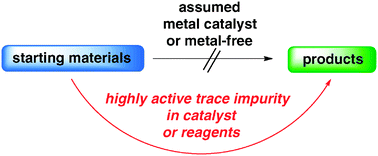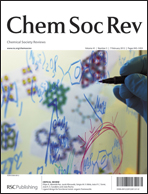Trace metal impurities in catalysis
Abstract
Metal-catalysed transformations are a powerful tool in organic chemistry and the enormous progress, which has been made in the last few decades, was one more time honoured by the Nobel Prize in Chemistry in 2010. Many metal-containing compounds have been applied in


 Please wait while we load your content...
Please wait while we load your content...